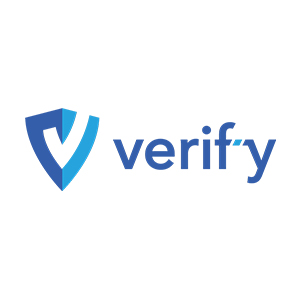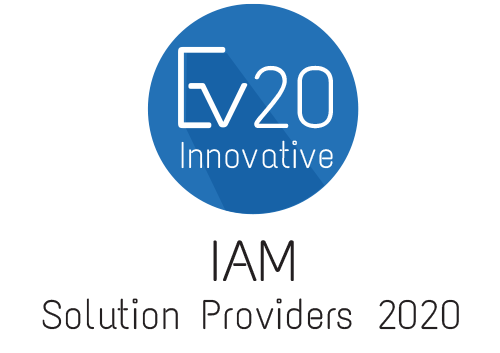
Last year, Verizon’s research pointed out that weak or compromised credentials were responsible for 80% of data-hacks, and 29% of all breaches ensue from stolen credentials. Despite this shocking revelation, companies still deter from bolstering the application of digital identification processes related to the most critical aspects of their business. With the emergence of COVID new workforce standards such as \ ‘work-from-home’ are becoming the de-facto way of life and it seems like many of these new ways of working are here to stay. Businesses need to operate with a larger number of unknowns, such as more online interactions with new counterparts . This meansthat new vulnerabilities are exposed daily and companies digital assets are the main target. “Right now, Identity and Access Management (IAM) rings truer than ever and every organization should continuously assess its ability to withstand and thwart such attacks.” says Ed Zabar, Founder and CEO, Verif-y.
An investment banking veteran and a natural observer – Ed, witnessed first-hand the repercussions caused by the inaccuracies of credential and identity verification. This sparked a sequence of ideas on how to address this issue and thus, Verif-y was created. Verif-y’s flagship service, A user centric digital identity based on Know Your Customer as well as several other unique components is engineered using real-world lessonslearned from decades of financial,healthcare and government experiences. “Our KYC solution provides a technologically superior, scalable, and easy to integrate solution for organization of different size and type. However, the real difference is the services flexibility to address various organizational needs as well as serve as a starting point to reducing regulatory oversight.” adds Ed.
Creating a digital identity is imperative, but according to Edproviders of digital identity scanning often falter, failing to create a holistic view of the different parts which constitute the identity. A robust identity validation should not be limited to the scope of just document scanning or simple ID scanning. Verif-yaddresses this market and technology gap by integrating advanced Machine Learning, Artificial Intelligence as well as several aspects of blockchain technology to create a stronger, more reliable, faster and overtime, less expensive solutions. . As Ed explains, “Our scanning technologies cover all major global identity documents, which are processed using our layered OCR and machine learning technologies. Layering additional image and document analysis, liveness tests, , selfie comparisons, and other solutions, allows our clients to quickly and accurately identify mistakes and bad actors attempting to circumvent their onboarding and identity verification processes. With customized rules, communication preferences, and flexible algorithms, our screening solutions serve each client’s specific operational and regulatory/compliance needs,”. Verif-y’s approach is three-fold:
- Users experience a frictionless on-boarding process that includes identity scanning, selfie capturing, and additional analysis as needed as well as multiple layers ofcustomization, if needed.
- Companies can now be certain that they have taken the necessary (and beyond) steps to identify their counterpart, being an individual or a business, while immediately increasingefficiency and reducingunnecessary costs.
- Our solution allows for better interaction with the newly identified counterpart on multiple levels across the organization and outside. This improves the relationship companies have with their customers/users and ensures a long lasting, benefit to their bottom line.
Defending against bad actors leveraging machine learning based identity screening is only part of the prowess Verif-y offers. Verif-y’s AML/Sanctions Screening Solutions are a different breed pertaining to its visionary approach to mitigate any impending challenge. With an agile verification process, each person and document’s viability is tested against a set of predefined metrics. Ed simplifies, “we screen end users against a plethora of sanction databases sourced from regulatory authorities, third-parties and government sites from around the world and our own list of bad actors. These include OFAC, EU, UK, OSFI and hundreds more. Names are scanned instantly and flagged and reported if appropriate.”
For example, Verif-y reinforced a major financial institution’s IAM approach through a scalable interface, capable of integrating with any existing infrastructure. The interface acts as a first line of defence for the company and whilst in action, yields additional data points that enables improved decision making and better interaction with end users/customers. Verif-y sifts through and analyzes this massive pool of data in ways that maintain privacy controls, enabling the client to design their own reporting functionalities and smart dashboards if they wish to do so. Verif-ygives the client immense flexibility and the necessary transparency an auditability to deep dive into any relevant piece of data they need in order to compliantly conduct their business.
Looking ahead, Ed wants to build even more capabilities around the OCR functionality of their solution. “We are using machine learning and AI to improve ourknowledge of the users we process. We use this information to cross reference data from multiple sources and provide additional layers of information to our growing list of clients”, says Ed. Verif-y’s future is builtaround creating higher levels of efficiency and accuracy to support the operational and compliance needs of our customers’ IAM . “So, we’re constantly developing additional layers and capabilities that provide assurance of the data integrity, validity and relevance to our clients. While at the same time, increasingly improving user frictionless experience, privacy compliance, regulatory compliance, and the ability of organizations to provide their consumers with something that’s better than anything out there today,” concludes Ed.











